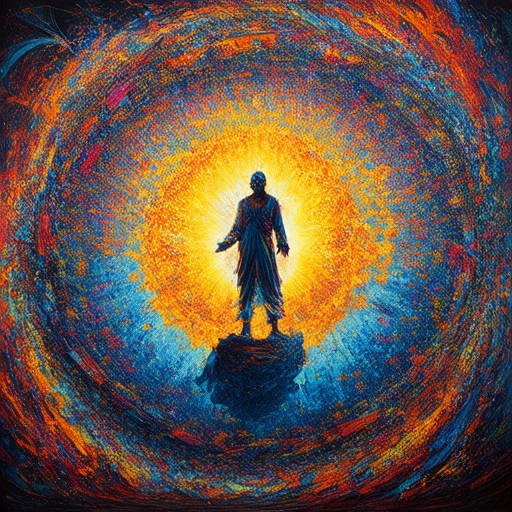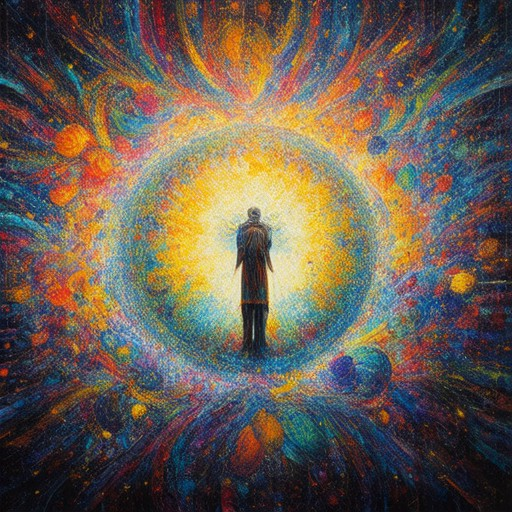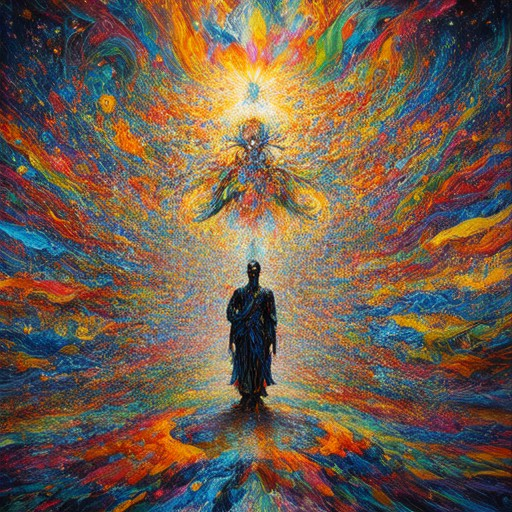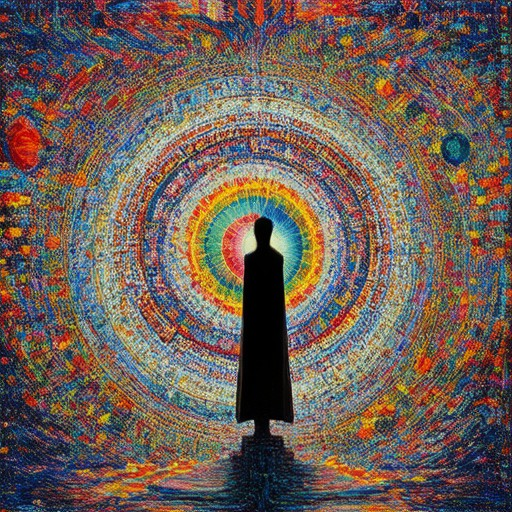Exploring Global Adventures in Culture: Understanding Examples from Around the World and Popular Culture
Culture is a journey that takes us across borders, through traditions, practices, and stories that connect us all. A global adventure in culture invites us to explore the rich tapestry of human experience, from the intricate dance of Japanese tea ceremonies to the vibrant celebration of Mexican fiestas. These cultural milestones not only reflect the uniqueness of each region but also highlight shared universal experiences that transcend boundaries.
As we delve into the realm of global culture, we uncover how traditions and practices shape identities and foster connections across continents. From the influence of global popular culture—whether through music, movies, or fashion—to the ways these elements resonate locally, the interplay between global and regional cultures offers fascinating insights. For students navigating the complexities of AP Human Geography, understanding global culture becomes a cornerstone of exploring geographical diversity and its implications.
This journey into global culture is not just intellectual—it’s an invitation to appreciate the beauty of human ingenuity and the ways in which cultures adapt and thrive. By examining case studies, key themes, and the interplay between global and local influences, we gain a deeper understanding of how cultures evolve and intersect, offering a map to the world’s most captivating landscapes.
Key Takeaways
- Understanding Global Culture: Shared beliefs and practices across societies, influenced by globalization.
- Cultural Blending: Fusion of traditions through globalization.
- Technology’s Role: Bridges cultural divides via internet and social media.
- Migration and Hybrid Cultures: How diasporas create new cultural forms.
- Media and Entertainment: Shape global culture via platforms like Spotify and Netflix.
- Cuisine Examples: Adaptable dishes like Chinese food.
- Festivals: Blend of local and global traditions, e.g., Mardi Gras.
- Art and Design: Modern art inspired by diverse cultures.
- Resources for Exploration: Use Lonely Planet, National Geographic, Bending Borders.
- Popular Culture Reflection: Reflects globalization, from media to sports, while preserving local identities.

Cultural Adventure
A cultural adventure is an immersive journey that allows individuals to delve deeply into the traditions, customs, and experiences of a particular region or community. It combines exploration, discovery, and engagement with local cultures, offering a unique perspective on history, art, and daily life.
Why embark on a cultural adventure? Curiosity about distant lands, a passion for history, or a desire to connect with authentic experiences often drive individuals to seek out these adventures. Cultural adventures are not just about sightseeing—they are about immersing yourself in the essence of a place and its people.
Key Elements of a Cultural Adventure
- People: Interacting with locals, learning about their traditions, and understanding their way of life adds depth to the experience.
- History: Exploring historical sites and artifacts provides insight into the evolution of a culture and its values.
- Nature: Many cultural adventures involve outdoor activities that highlight the natural beauty of a region.
- Art and Culture: Engaging with local art, music, and cuisine offers a sensory and intellectual connection to the culture.
Examples of Cultural Adventures
- Festivals and celebrations that showcase traditional customs and rituals.
- Historical tours led by experts who provide context and anecdotes.
- Immersive experiences like staying in traditional accommodations, attending local workshops, or participating in communal activities.
A cultural adventure is not just a trip—it’s a transformative experience that broadens your horizons and deepens your appreciation for diversity. Whether it’s through exploring ancient ruins, savoring authentic cuisine, or connecting with local communities, a cultural adventure invites you to see the world through fresh eyes.
Ready to embark on your own cultural adventure? Discover the hidden gems and rich traditions waiting for you at Bending Borders .
What is Global Culture?
Global culture refers to the shared values, beliefs, and practices that transcend national boundaries, often influenced by globalization. It encompasses a mix of traditions, technologies, and consumer behaviors that have become universal due to increased connectivity and cross-border interactions.
Key Characteristics of Global Culture:
- Interconnectedness : Global culture is shaped by advancements in technology, communication, and transportation, which have created a more interconnected world.
- Cultural Adaptation : Local cultures often adopt and adapt global elements to fit their own contexts, resulting in hybrid forms of expression and behavior.
- Homogenization : While global culture promotes unity, it also risks homogenizing diverse traditions, sometimes leading to the loss of unique cultural identities.
Examples of Global Culture:
- Media and Entertainment :
- Pop Music : Artists like BTS and Taylor Swift have global fanbases, spreading Korean and American culture worldwide.
- Hollywood Films : Movies such as “Avengers: Endgame” and “Titanic” have become cultural phenomena, watched globally.
- Streaming Platforms : Services like Netflix and Spotify dominate markets worldwide, influencing preferences for entertainment.
- Food and Consumer Goods :
- Fast Food Chains : McDonald’s, KFC, and Starbucks are iconic examples of global culture, offering familiar experiences across continents.
- Fashion : Brands like H&M and Zara sell clothing globally, blending trends from different regions.
- Technology : Smartphones and social media platforms like Instagram and WhatsApp have become universal tools.
- Language and Communication :
- English has become the lingua franca of global culture, facilitating international business and communication.
- Social media slang and internet culture are examples of how language evolves globally.
- Sports and Gaming :
- Events like the FIFA World Cup and the NBA bring people together, transcending geographical boundaries.
- Video games such as Fortnite and Pokémon have global followings, shaping youth culture worldwide.
- Digital Platforms :
- Platforms like YouTube, TikTok, and Wikipedia allow for the sharing of global culture, fostering cross-cultural understanding.
Impact of Global Culture:
- Positive Aspects : It fosters international cooperation, economic growth, and cultural exchange.
- Challenges : Overconsumption, cultural erosion, and inequality can arise from unchecked globalization.
By understanding global culture, we can appreciate its complexities and work toward a more inclusive and harmonious world.

What is a Global Popular Culture?
Globalized popular culture refers to the widespread dissemination and adoption of cultural elements, including music, film, fashion, cuisine, and entertainment, across various nations and societies. This phenomenon is primarily driven by technological advancements, globalization of media, and increased connectivity between different regions of the world.
Key Characteristics of Globalized Popular Culture:
- Cultural Exchange : Globalized popular culture facilitates the exchange of cultural elements across borders. This exchange often leads to the blending of traditions, languages, and social norms, resulting in a unique hybrid of cultures.
- Media and Technology : The rise of digital platforms, streaming services, and social media has significantly accelerated the spread of popular culture. Platforms like Netflix, YouTube, and Instagram allow cultural content to reach global audiences instantaneously.
- Homogenization and Hybridization : While globalization can lead to the homogenization of certain aspects of culture, it also fosters hybridization. This occurs when local cultures adapt foreign elements to suit their own contexts, creating something entirely new.
- Impact on Local Cultures : The integration of globalized popular culture can sometimes overshadow traditional local cultures. However, it also provides opportunities for cultural innovation and the development of unique local variations.
Examples of Globalized Popular Culture:
- Music : Artists from around the world collaborate and share music genres, leading to the creation of global hits that transcend national boundaries.
- Fashion : Trends originating from one region can become global sensations, influencing people from diverse cultural backgrounds.
- Food : Fusion cuisines, such as sushi in Western countries or pizza in Asia, exemplify how globalized popular culture influences dietary habits.
- Entertainment : Movies, TV shows, and web series produced in one country gain massive followings worldwide, shaping global conversations and pop culture.
Role of Social Media:
Social media platforms have become powerful tools for propagating globalized popular culture. Influencers, celebrities, and brands use these platforms to share content that resonates globally, further accelerating the spread of cultural elements.
Challenges and Considerations:
While globalized popular culture offers opportunities for cultural exchange, it also raises concerns about cultural appropriation, loss of traditional heritage, and the influence of corporate media. Balancing the benefits and drawbacks of globalized popular culture requires careful consideration and dialogue among diverse communities.
By understanding and engaging with globalized popular culture, individuals can appreciate the ways in which traditions and innovations intersect, fostering a more interconnected world.

What Does Global Culture Mean in AP Human Geography?
Global culture refers to the shared beliefs, values, customs, behaviors, and artifacts that are common across diverse societies and transcend national boundaries. In the context of AP Human Geography, global culture encompasses the interconnectedness of cultures due to advancements in communication, technology, and globalization. It reflects the ways in which people from different backgrounds interact, share ideas, and influence one another on a global scale.
Key Aspects of Global Culture
- Cultural Blending : Global culture arises from the fusion of traditions, languages, and practices from various regions. This blending often occurs through globalization , which has made countries more interconnected than ever before.
- Technology and Communication : Modern technologies like the internet, social media, and international travel have facilitated the spread of cultural elements. Platforms like Bending Borders showcase how these tools bridge cultural divides by sharing stories and insights from around the world.
- Migration and Diasporas : The movement of people across borders has led to the development of hybrid cultures. For instance, National Geographic highlights how migratory patterns contribute to the creation of global cultures.
- Media and Entertainment : Movies, music, and television shows often transcend cultural boundaries, spreading ideas and influencing global audiences. Services like Spotify and Netflix exemplify how entertainment can shape global culture.
Examples of Global Culture
- Cuisine : dishes like Chinese cuisine have become popular worldwide, adapting to local tastes while retaining traditional elements.
- Festivals : events like Mardi Gras attract participants from various countries, showcasing a blend of local and global traditions.
- Art and Design : styles such as Modern Art often draw inspiration from diverse cultures, creating works that resonate globally.
Competitors and Resources
- Lonely Planet offers guides and resources for travelers seeking to understand global cultures.
- National Geographic provides educational materials and documentaries on cultural topics.
- Bending Borders features unique travel stories and cultural insights, helping readers explore global traditions.
By understanding global culture, students in AP Human Geography can better analyze its impacts on societies and individuals alike.
Examples of Culture in Human Geography
Culture in human geography encompasses the unique traditions, beliefs, practices, and customs that define a particular group or society. Here are some notable examples:
- Festivals and Celebrations: Events like Mardi Gras in New Orleans, Carnival in Rio de Janeiro, and the Chinese Lunar Festival highlight cultural expressions through parades, costumes, and rituals.
- Languages: The diversity of languages across the globe, such as Mandarin in China, Spanish in Mexico, and Swahili in Kenya, reflects distinct cultural identities and historical contexts.
- Architecture: Iconic structures like the Gothic cathedrals of Europe, the Great Wall of China, and the Taj Mahal in India showcase cultural influences in design and construction.
- Traditional Music and Dance: Forms like the ballet in Western cultures, Bharatanatyam in India, and Polynesian dances preserve cultural heritage and tell stories of history and tradition.
- Food and Cuisine: Dishes such as pizza in Italy, curry in India, and sushi in Japan exemplify how food is deeply tied to cultural identity and regional history.
- Customs and Traditions: Rituals like the Japanese tea ceremony, the Indian festival of Diwali, and the Maori haka in New Zealand demonstrate cultural continuity and significance.
Culture is the shared heritage of a group of people, reflecting their history, values, and social norms. Understanding culture through human geography provides insight into how different societies adapt and evolve over time.

Examples of Popular Culture in AP Human Geography
Popular culture in AP Human Geography encompasses a wide range of phenomena that reflect the values, beliefs, and practices of societies around the globe. These examples illustrate key concepts such as globalization, cultural homogenization, and urbanization:
- Media & Entertainment:
- The depiction of global cities in movies and TV shows, such as Friends (set in New York City) or Lost (filmed in various exotic locations)
- Music artists with global followings, such as Beyoncé or BTS, whose influence extends beyond their home countries
- Fashion:
- Global fashion designers like Balenciaga and Gucci who create clothing that resonates internationally
- Streetwear brands like Supreme or Nike, which have cult followings worldwide
- Social Media:
- Influencers and trends that spread rapidly across platforms like Instagram and TikTok, showcasing global cultural exchange
- Hashtags and challenges that become universal, such as #IceBucketChallenge
- Food & Cuisine:
- Cuisines like sushi or pizza that have adapted to global palates
- Fast-food chains like McDonald’s, which offer localized menus while maintaining a consistent brand identity
- Sports:
- Events like the FIFA World Cup or the Super Bowl, which transcend national boundaries
- Sports apparel brands like Nike or Adidas, whose designs influence global fashion trends
- Gaming:
- Video games like Fortnite or Minecraft that have global player bases
- Esports tournaments that draw millions of viewers worldwide
These examples highlight how popular culture reflects and reinforces global interconnectedness, while also preserving local traditions and identities. Understanding these dynamics is crucial for analyzing the impact of globalization on societies.




0 Comments